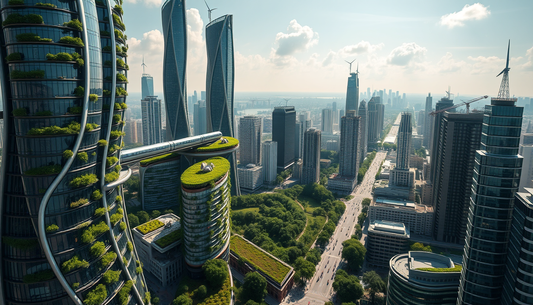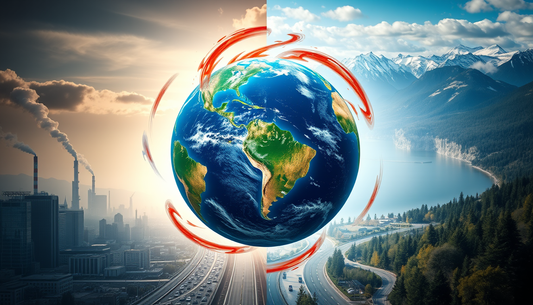Rainforests are extraordinary ecosystems, real lungs of our planet. Covering just 6-7% of the Earth's surface, these forests are home to more than half of the world's biodiversity, playing a vital role in global climate balance. Understanding the importance of these ecosystems and the need to protect them is essential for the future of our planet.
Characteristics of Rainforests
Rainforests are characterized by a hot and humid climate, with abundant rainfall throughout the year. This abundance of water and heat allows for lush growth and an extraordinary diversity of plant and animal species. The trees reach impressive heights, with dense canopies that create a unique microclimate within the forest.
These ecosystems are divided into different layers, each with species adapted to live in that particular environment. From the undergrowth rich in ferns and herbaceous plants, to the treetops, where many species of birds, monkeys and insects live, rainforests are a true paradise of biodiversity.
Role in Climate Regulation
The role of rainforests in climate regulation is fundamental. Thanks to the enormous amount of biomass present, these forests absorb large quantities of carbon dioxide from the atmosphere, significantly contributing to the mitigation of climate change.
Additionally, plant evapotranspiration creates a moisture cycle that generates clouds and rain, influencing precipitation patterns regionally and globally. This process, known as a "water bomb", is essential for maintaining delicate climate balances.
Threats to Rainforests
Despite their crucial role, rainforests are unfortunately threatened by several factors, including deforestation and climate change. The conversion of these areas into agricultural land, pastures or urban settlements is destroying unique and precious habitats.
Furthermore, the increase in temperatures and the alteration of rainfall patterns due to climate change are putting a strain on the survival of many species, causing the degradation of these ecosystems.
Conservation and Reforestation
Faced with these threats, it is essential to adopt conservation and reforestation strategies to protect rainforests. At a global level, several initiatives have been launched, such as the United Nations Program to Reduce Emissions from Deforestation and Forest Degradation (REDD+), which encourages the protection and sustainable management of forests.
Furthermore, many countries are investing in reforestation projects, planting new trees and restoring degraded areas. These actions, if sustained in the long term, can help restore the balance of forest ecosystems and mitigate the effects of climate change.
Examples of Successful Projects
In Brazil, the Socioenvironmental Institute (ISA) has launched the "Corredor Socioambiental do Xingu" project, which aims to protect and restore the Amazon forest in the area of the Xingu Indigenous Park. Thanks to this project, millions of trees have been planted and local communities have been involved in the sustainable management of resources.
In Indonesia, the non-governmental organization Yayasan Konservasi Alam Nusantara (YKAN) is working to restore mangrove forests in the Sulawesi region. These coastal ecosystems play a crucial role in protecting communities from extreme weather events and sequestering carbon.
These are just a few examples of how, through coordinated efforts and the involvement of local communities, it is possible to preserve and restore rainforests, contributing to the protection of these precious ecosystems.
Conclusion
Rainforests are true natural treasures, which play a fundamental role in the global climate balance. Protecting and restoring these ecosystems is an urgent challenge, requiring the commitment of governments, organizations and citizens around the world.
Through concrete conservation and reforestation actions, we can help preserve biodiversity, mitigate climate change and ensure a more sustainable future for our planet. Every step, every tree planted, makes a difference to safeguard these green lungs of the world.







